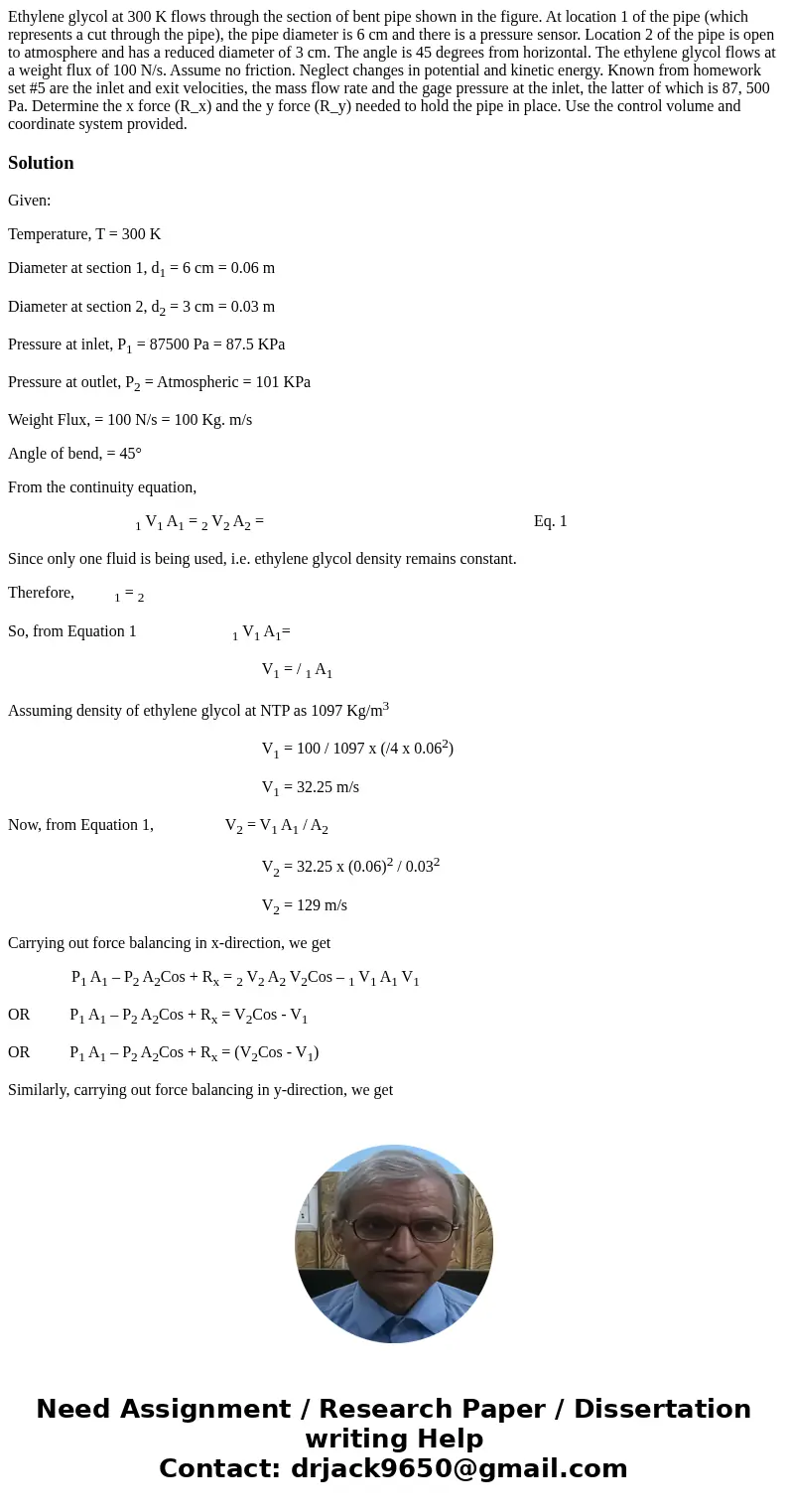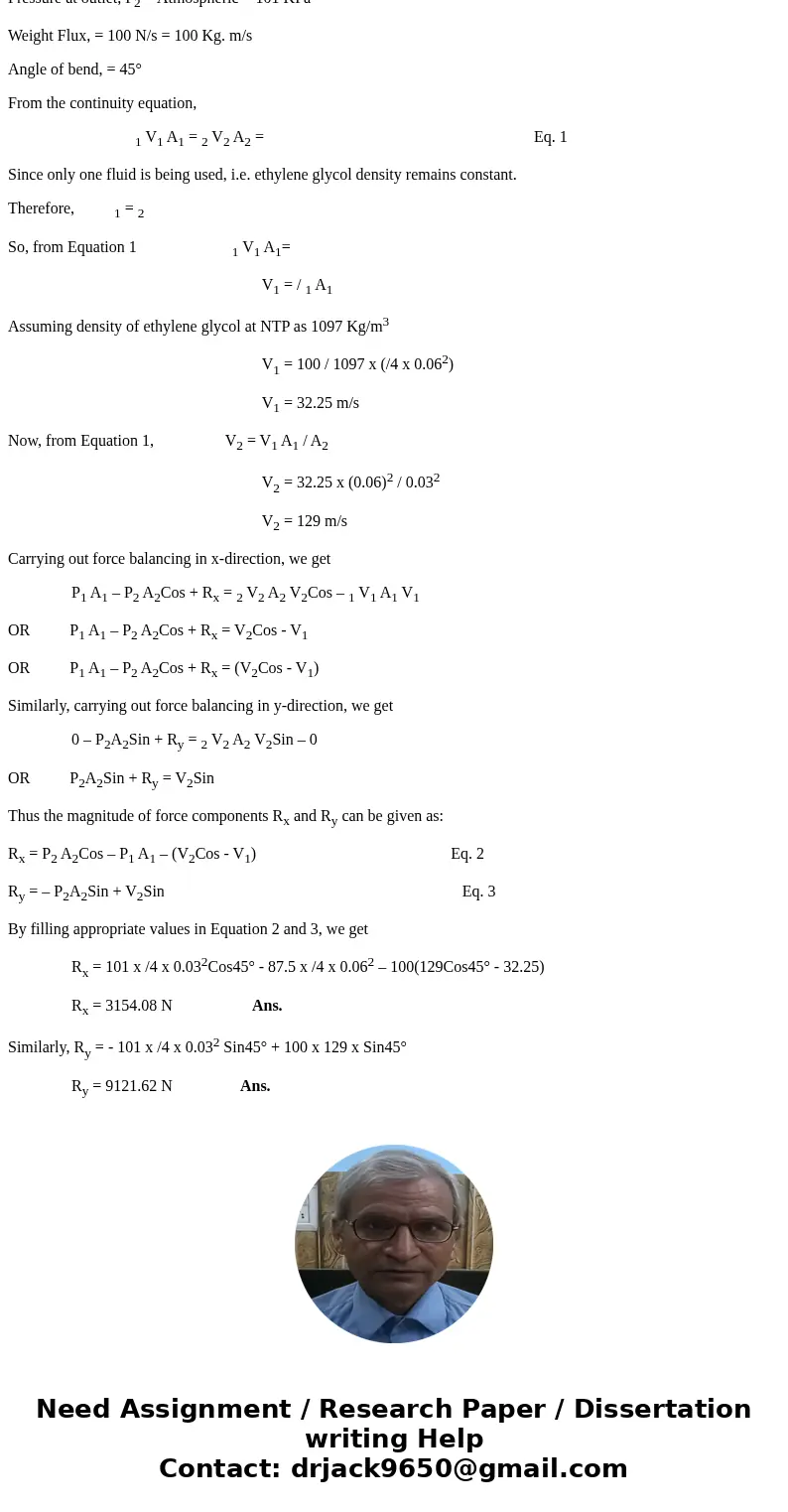Ethylene glycol at 300 K flows through the section of bent p
Solution
Given:
Temperature, T = 300 K
Diameter at section 1, d1 = 6 cm = 0.06 m
Diameter at section 2, d2 = 3 cm = 0.03 m
Pressure at inlet, P1 = 87500 Pa = 87.5 KPa
Pressure at outlet, P2 = Atmospheric = 101 KPa
Weight Flux, = 100 N/s = 100 Kg. m/s
Angle of bend, = 45°
From the continuity equation,
1 V1 A1 = 2 V2 A2 = Eq. 1
Since only one fluid is being used, i.e. ethylene glycol density remains constant.
Therefore, 1 = 2
So, from Equation 1 1 V1 A1=
V1 = / 1 A1
Assuming density of ethylene glycol at NTP as 1097 Kg/m3
V1 = 100 / 1097 x (/4 x 0.062)
V1 = 32.25 m/s
Now, from Equation 1, V2 = V1 A1 / A2
V2 = 32.25 x (0.06)2 / 0.032
V2 = 129 m/s
Carrying out force balancing in x-direction, we get
P1 A1 – P2 A2Cos + Rx = 2 V2 A2 V2Cos – 1 V1 A1 V1
OR P1 A1 – P2 A2Cos + Rx = V2Cos - V1
OR P1 A1 – P2 A2Cos + Rx = (V2Cos - V1)
Similarly, carrying out force balancing in y-direction, we get
0 – P2A2Sin + Ry = 2 V2 A2 V2Sin – 0
OR P2A2Sin + Ry = V2Sin
Thus the magnitude of force components Rx and Ry can be given as:
Rx = P2 A2Cos – P1 A1 – (V2Cos - V1) Eq. 2
Ry = – P2A2Sin + V2Sin Eq. 3
By filling appropriate values in Equation 2 and 3, we get
Rx = 101 x /4 x 0.032Cos45° - 87.5 x /4 x 0.062 – 100(129Cos45° - 32.25)
Rx = 3154.08 N Ans.
Similarly, Ry = - 101 x /4 x 0.032 Sin45° + 100 x 129 x Sin45°
Ry = 9121.62 N Ans.


 Homework Sourse
Homework Sourse